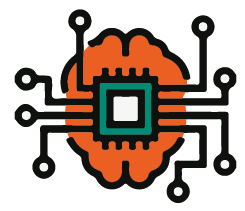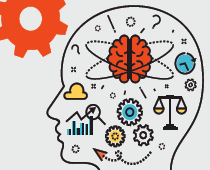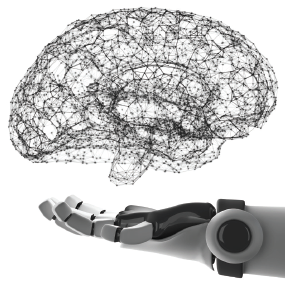Intelligence & Insight: The Latest News in AI and Machine Learning
AI Market to Grow to $36.1B by 2025
The healthcare-focused artificial intelligence market is expected to see 50 percent growth through 2025, according to a report by MarketsandMarkets.
Here are five key trends:
- The AI in healthcare market was valued at $2.1 billion in 2018.
- It is expected to grow to $36.1 billion by 2025, at a compound annual growth rate of 50.2 percent during the forecast period.
- Machine learning is anticipated to hold the largest share of the market, followed by natural language processing.
- The drivers are increasingly large and complex data sets, growing need to reduce increasing healthcare costs, improving computing power and declining cost of hardware.
- The challenges are reluctance of medical practitioners to adopt AI-based technologies, lack of skilled workforce and ambiguous regulatory guidelines for software.
-
 Healthcare, Meet the Chief AI Officer
Healthcare, Meet the Chief AI Officer
The C-suite has a new addition: the Chief Artificial Intelligence Officer. And as best we can tell, Anna Goldenberg, PhD, is the first. She was named chief of biomedical informatics and artificial intelligence at The Hospital for Sick Children in Toronto in January.
“I feel like right now as a computer scientist, as a researcher in machine learning and AI, I can actually make a big difference in healthcare,” Goldenberg told The Globe and Mail. “It will take time, but I think we are getting closer and closer to seeing it happen.”
And truth be told, AI is powering AI. Goldenberg’s post is funded in part by a $1.75-million donation from a Toronto engineer and entrepreneur whose newborn son underwent surgery at Sick Childrens. The entrepreneur co-founded a company that developed a software platform for connecting self-driving cars to smart infrastructure that was sold to Ford Motor Co. last year. The rest of the position is being matched by hospital’s fundraising foundation, bringing the total donation to $3.5 million.
Goldenberg, who has a master’s degree and PhD in data mining and machine learning, currently serves as an associate professor of computer science at the University of Toronto and is a senior scientist at the hospital. Her research focuses on using machine learning to map human disease heterogeneity and using patient data and AI to predict cardiac arrest.
-
 Drum Roll, Please: AI Earns 1st Peer-Review Nod
Drum Roll, Please: AI Earns 1st Peer-Review Nod
It’s been a long time coming, but the first-ever retrospective study on AI was published online in The Lancet Oncology in August. The study sought to develop a score to predefine responders to cancer therapy and improve the efficacy and cost ratio of treatment.
This tap of the peer-reviewed wand establishes that artificial intelligence can process medical images to extract biological and clinical information. This means physicians soon may be able to use imaging to identify tumor biology in any part of the body without having to perform a biopsy. If the team hadn’t demonstrated its feasibility, the technique would sound like sci fi.
Here’s how the research team did it. They designed an algorithm to analyze CT images. The image data were combined with a “radiomic signature” that defines the level of lymphocyte infiltration of a tumor and offers a predictive score for the efficacy of immunotherapy in the patient. The radiomic signature was captured, developed and validated in 500 patients. The team found that patients in whom immuno-therapy was effective at 3 and 6 months had higher radiomic scores as did those with better overall survival.
-
 Building AI ‘Machines With Morals’
Building AI ‘Machines With Morals’
In this age of intelligence, there’s a new center with a new mission to inspire and influence public policy and regulations on the ethics of AI and building “machines with morals.” The Center for Advancing Responsible and Ethical Artificial Intelligence (CARE-AI), established at the University of Guelph in Ontario, is focused on ensuring technologies benefit people, minimize harm and maintain the human side of technology.
The center is bringing together 90 university researchers and scholars who plan to analyze the humanistic and social aspects of AI and investigate methodologies, such as learning algorithms, human-computer interfaces, data analytics, sensors and robots in the areas of human and animal health, environmental sciences, agri-food and the bio-economy. Among the issues they will probe are AI’s potential to become entities with emotion and consciousness, and how humans and AI will interact as intelligent machines begin to design themselves.
-
 Mayo Team Finds ‘Silent’ Heart Disease
Mayo Team Finds ‘Silent’ Heart Disease
Applying artificial intelligence to an electrocardiogram can help identify asymptomatic left ventricular dysfunction, a precursor to heart failure. A team of researchers from Mayo Clinic published a study in Nature Medicine showing they can do just that.
The team used Mayo Clinic data to screen 625,326 paired EKG and transthoracic echo-cardiograms to identify the patient population. Then they created, trained, vali-dated and tested a neural network to test their hypothesis, finding the accuracy comparable to other common screening tests.
Interestingly, in patients without ventricular dysfunction, those who had a positive AI screen had four times the risk of developing future ventricular dysfunction, compared with those with a negative screen, the study found.
“In other words, the test not only identified asymptomatic disease, but also predicted risk of future disease, presumably by identifying very early, subtle EKG changes that occur before heart muscle weakness,” according to senior study author Paul Friedman, MD.
-
 HBR: AI May Cut Healthcare’s Red Tape
HBR: AI May Cut Healthcare’s Red Tape
Could AI be the solution to stop the “downward spiral in productivity” in the U.S. healthcare system plagued (since World War II) by labor-intensive and inefficient administrative tasks? Absolutely, according to an article in Harvard Business Review.
AI tools capable of processing vast amounts of data and making real-time recommendations could greatly reduce the administrative burdens in the healthcare system–and save money to boot. According to the article, about one-third of the $3 trillion annual costs of the U.S. healthcare system are administrative and operational inefficiencies. AI already is enabling faster hospital bed assignments, easier and improved documentation and automated fraud detection. For example, AI helped one health system assign beds 30 percent faster, reduce time in recovery by surgical patients by 80 percent, cut ER bed wait times by 20 percent and accept 60 percent more transfer patients.
To take advantage of AI, the authors say healthcare organizations need to:
- Simplify and standardize data and processes so AI can work with them
- Ensure interoperability and data sharing among IT systems
- Phase out staff who do not add value to the business by helping improve outcomes
-
 Blacking Out the ‘Black Box’ Challenge?
Blacking Out the ‘Black Box’ Challenge?
Using fewer than 1,000 imaging cases, researchers from Massachusetts General Hospital in Boston were able to train an AI algorithm to detect intracranial hemorrhage (ICH) and classify its five sub-types on unenhanced head CT scans (Nature Bio-medical Engineering). The deep learning algorithm was designed to reveal the reasoning behind its decision, often called AI’s “black box” problem, through an “attention map” that highlights important regions on the images used to make its predictions. It also eliminates the need for radiologists to annotate the large, high-quality data sets used to train most deep learning models.
The research team found the model performed with comparable accuracy but higher sensitivity than trained radiologists.
Here’s why it really matters: Brain hemorrhage is a potentially fatal condition, having an automated sensitive model that reliably detects it can expedite treatment for patients. It also may help neuroradiologists of varying levels of expertise determine the presence or absence of bleeding from a brain scan sooner and avoid delayed or missed diagnoses of ICH.
-
 AI Tool Detects Skin Cancers Better Than Dermatologists
AI Tool Detects Skin Cancers Better Than Dermatologists
Put one in the win column for AI. That was the result when an AI-based network outperformed dermatologists in analyzing images of skin lesions for cancer, no matter the experience level of the physician, according to a recent study the Annals of Oncology. Dermatologists, however, performed better after adding real-life clinical information to their diagnoses, but were still outperformed by the neural network.
“Our data clearly show that a CNN [convolutional neural network] algorithm may be a suitable tool to aid physicians in melanoma detection irrespective of their individual level of experience and training,” wrote author Holger A. Haenssle, MD, a professor with the department of dermatology at the Heidelberg University in Germany.
-
 On the Verge: DL Predicts Breast Tumor Response to Chemo
On the Verge: DL Predicts Breast Tumor Response to Chemo
Get ready for precision medicine. Case in point: Researchers have predicted with 88 percent accuracy how breast tumors will respond to neoadjuvant chemotherapy (NAC), according to new findings published in the Journal of Digital Imaging. The benefits are twofold: providing a better approach to assess treatment response early and “significantly” improving on current prediction methods that rely on interval imaging once therapy is started.
Using a breast MRI tumor dataset, researchers at Columbia University Irving Medical Center in New York employed a deep learning convolu-tional neural network (CNN) approach to train and predict response to chemotherapy prior to its initiation on 141 patients.
“Our early prediction model of treatment response has the potential to impact clinical management in patients with locally advanced breast cancer, including the opportunity to direct appropriate therapy in non-responders, minimize toxicity from ineffective therapies, and facilitate the upfront use of novel targeted treatment in the neoadjuvant setting,” the authors wrote.
What’s next? Larger datasets to improve the model and ultimately help move it toward clinical implementation.
-
Amy Baxter, Danielle Brown, Melissa Rohman, Subrata Thakar, Mary Tierney and Michael Walter contributed to these stories.
-
View more features from this issue:
Building Foundations to Build Better Care
Embracing AI: Why Now Is the Time for Medical Imaging
Leveraging Technology, Data and Patient Care: How Geisinger Is Interjecting Insight & Action
Bullish on AI: The Wisconsin Way: Reengineering Imaging & Image Strategy
ML’s Role in Building Confidence and Value in Breast Imaging
Will ‘Smart’ Solutions Really Transform Cardiology?
Matching Machine Learning and Medical Imaging: Predictions for 2019
NYU’s Daniel Sodickson on AI, Facebook and Why Faster MR Scans Could Improve Healthcare
